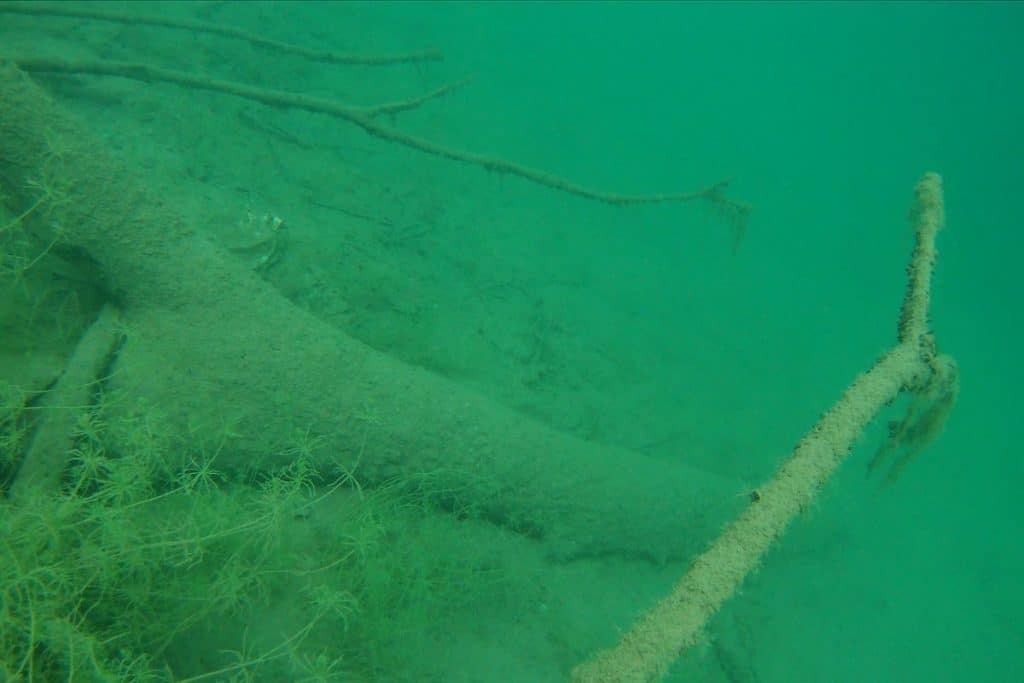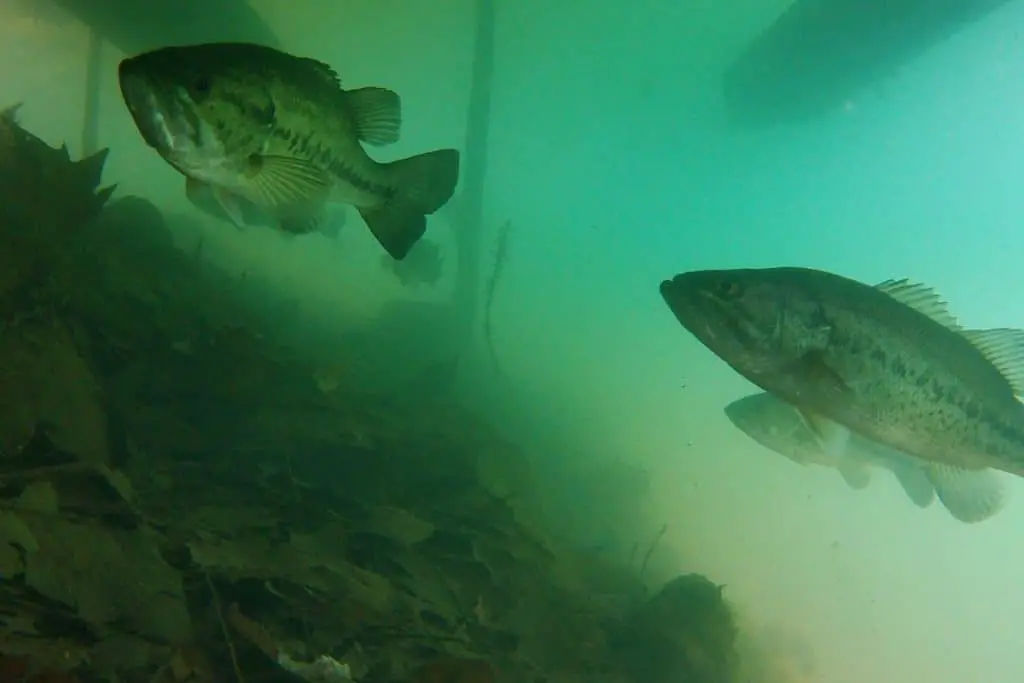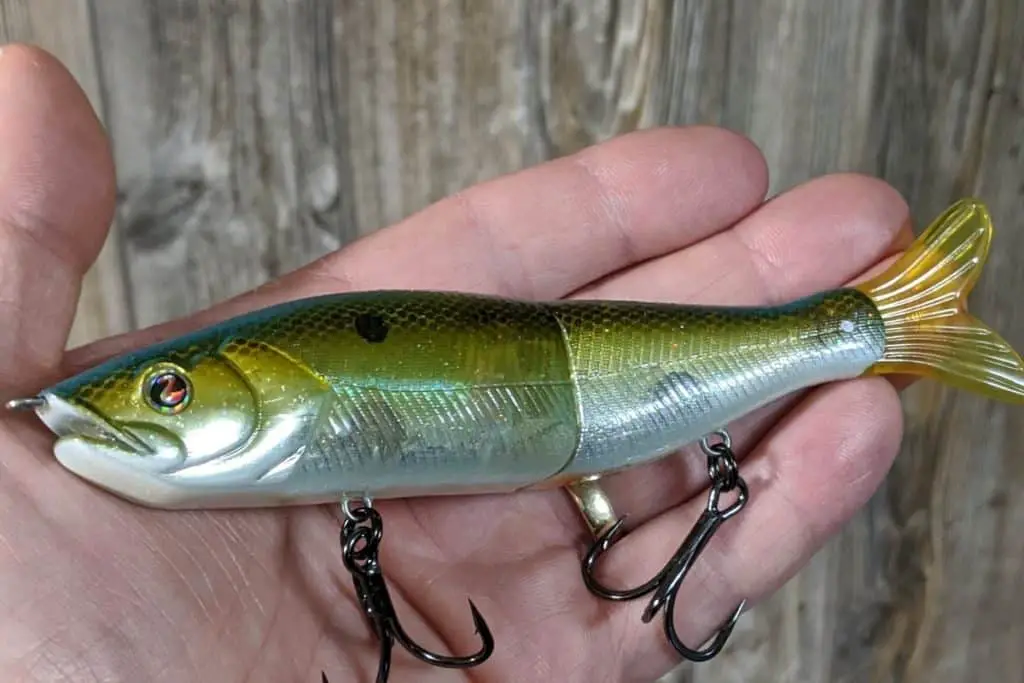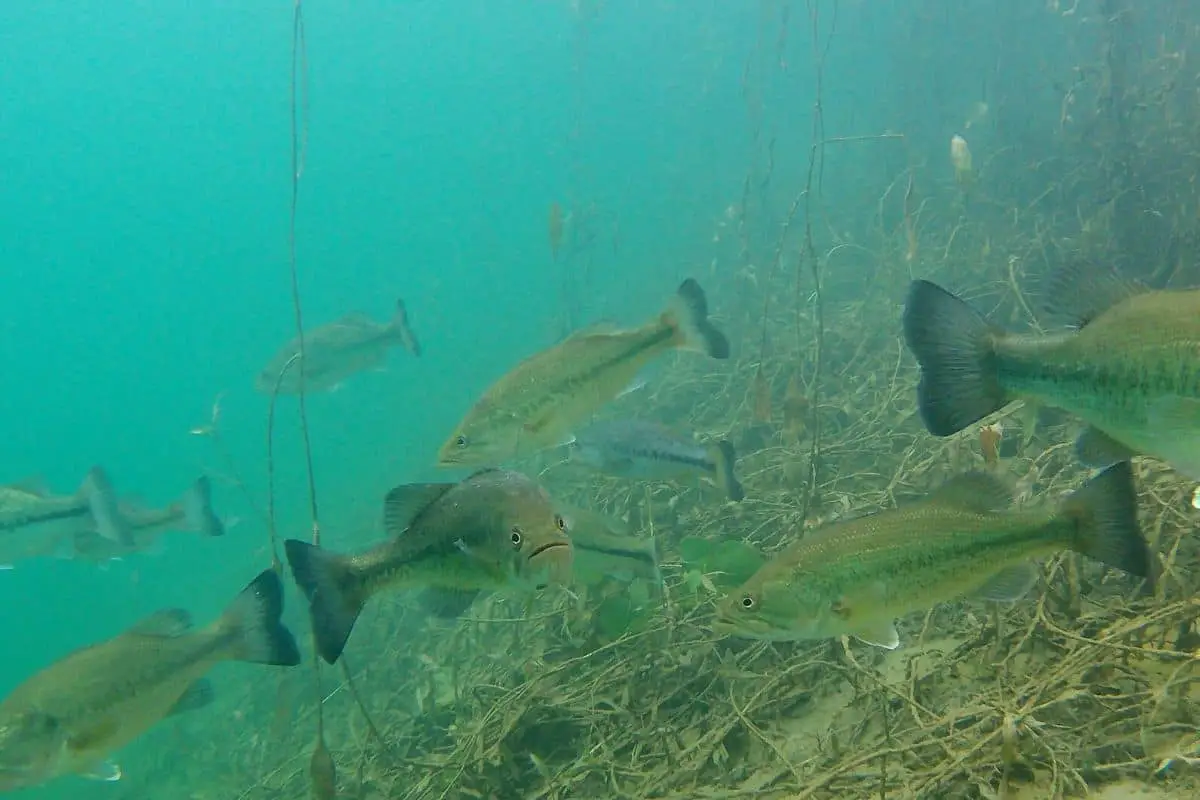Bass fishing media is full of images portraying huge bass and happy anglers. These photos inspire us to hit the water, but we often fall well short of those massive lunkers.
Bass anglers wanting to catch bigger bass should try deeper water, isolated cover, and bigger lures.
While not all waters are teeming with double-digit bass, there are some strategies you can add that will exponentially increase the odds of you catching bigger bass.
Big Bass Tend to Use Deeper Water
The key phrase here is “deeper,” not “deep.”
This is an important factor to keep in mind. When bass anglers hear that big bass use deeper water, they assume it’s really deep. There are times that is true, but water clarity and weather conditions play a large role in what deep truly is.
In dirty and really stained water conditions, the majority of bass are going to be shallower than in ultra-clear waters.
A good starting point is to fish the water where your lure is just out of sight, no matter what the clarity is.
Small bass thrive in shallow conditions. There is plenty of cover for them to feel secure and tiny prey species abound.
Finding Deeper Water to Find Bigger Bass
If you are fishing from a boat, the easiest strategy is to back off at least one more cast length than you normally would.
So often the bigger fish we seek are in the portion of the lake that our boat is sitting over. We beat the bank and keep cruising right over the tops of bass that would make us proud to catch.
When shore fishing, this means making the absolutely longest cast you can. Using heavier weights and easier casting line, like braid with a fluoro leader, can add the yardage you are looking for.
Another solid approach is to focus on the first major depth change leading away from the shoreline.
Depending on the slope of the lakebed, this may be close to shore or it may be a hundred yards away. The first place where the lake or river bed pulls down to the depths is key for finding bigger bass.
(Here is an article on how to stop losing bass after you hook them.)

Looking for Bass in Deeper Water Takes a Commitment
This is mentally tough.
The visible cover of the shoreline calls to us. We want to cast to targets. Bringing our lures through open water is challenging – especially if we have not had much success in the past.
Remember, we are looking for better quality bass and this is one great way to do it.
Mark Davis, a former Bassmaster Classic Champ, and Angler of the Year, taught me it is OK to search, search, search, and then catch. Usually, that last part, the catch, is going to be better bass and lots of times there are many of them sitting in one area.
(Here is another article talking about bass fishing in deeper water.)
Targeting Isolated Cover to Find Bigger Bass
Spending many hours filming underwater has taught me a lot about this.
We tend to toss our lures at the most obvious stuff. Things that we can see with our sunglasses from the deck of the boat or the shoreline.
A weedbed that is the size of a house will draw our attention much sooner than that single clump of vegetation positioned ten yards away from it. Our mindset needs to change.
I have seen and caught so many bigger bass from the most unassuming piece of cover. That lone stick that barely peaks above the surface of the water may branch out below and hold a big fish. That is what we must think about when looking for isolated cover.
Targeting isolated cover and structure has worked for me many times.
The largest smallmouth bass I ever caught came from a tiny, tiny rock pile in Lake Erie. I found the spot by accident while running to a larger reef. The flasher on my boat picked it up. I circled back around, dropped a tube, and soon had a fish that pushed the eight-pound mark.
The beauty about focusing on isolated cover is that most other anglers will ignore it altogether. This leaves the bigger bass that tend to hang there less pressured.
(Here is an article about finding bass without a fishfinder.)

Big Baits Catch Bigger Bass – But There’s a Mindset to Understand
Yes, of course, I have caught big bass on tiny baits. No one will argue that.
But if you are looking for consistently bigger bites from better bass, using upscaled lures is a way to weed out the smaller fish.
Big bass need plenty of calories to survive. They are not interested in losing weight like most of us are. Calories mean survival and eating prey that is larger accomplishes that.
Here’s the catch – the number of bites you are going to get will diminish a lot, but those bites are likely to be ones you will always remember.
Using big baits, such as swimbaits that are 7+ inches, often results in only a few bites a day. That’s right. You may only get four bites all day, but those four bites could all be from the biggest bass you’ve caught.
This mindset is tough. Really tough. And there are some days when you may choose to not deal with it. Catching twenty smaller bass may be perfect on those days.
But when you are ready, and you feel that the commitment is one you want to make, it is a proven tactic that will yield a better-than-average fish.

The Common Theme to Catching Bigger Bass
You have probably noticed that twice in this article I talked about mental commitment.
First, when talking about fishing deeper water and then using bigger lures. It is easy as bass anglers to fall back into old habits. There have been days when I hardly get a bite all morning, but the fish I do catch is the best one I’ve had in the last ten trips.
It all depends on how you feel on any given day. Enjoy catching the smaller bass on days when they are plentiful and enjoy that one big bite on days you go searching for lunker bass.
Tight lines. Be safe and make sure to encourage someone today. You never know how you might change their life forever.
Isaiah 6:8

